Southeast of Sete Cidades, where volcanic ridgelines run toward the coast and crater lakes collect sky, there’s a network of paths that feel like an entirely different planet—one defined by texture, wind, and time.
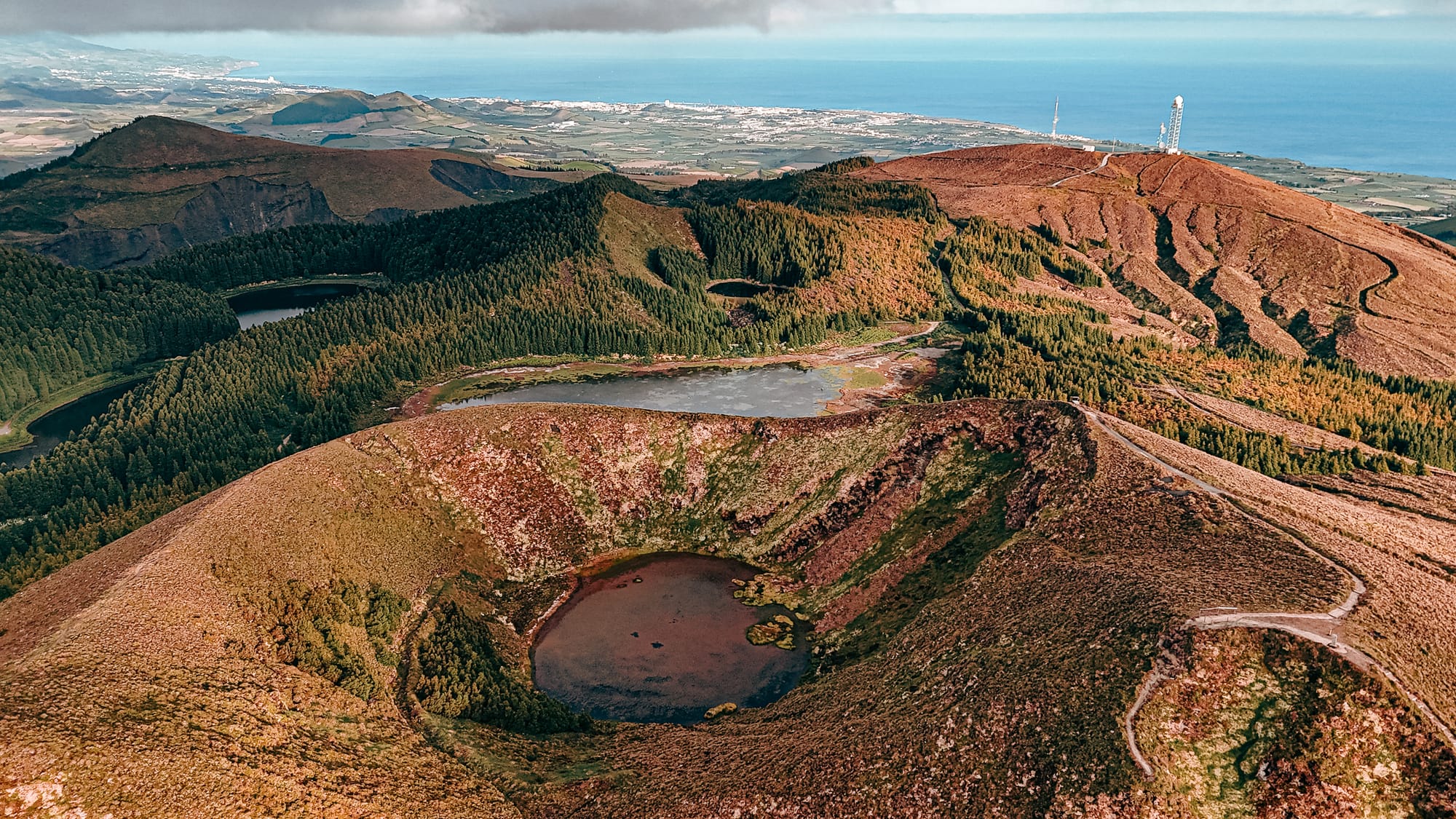
This is a hike through a series of interlocking volcanic caldeiras, where lake basins, moss beds, and ridgeline trails string together in long, wide views. You’ll pass by multiple crater lakes, wind along the upper edge of bowls rimmed with grasses and sedges, and descend briefly into micro-valleys thick with color-rich moss.
A high trail across crater rims
The route begins not far from Sete Cidades, but quickly pulls you into open space. The first section climbs gently before hugging the rim of one of the volcanic craters, where a round lake pools quietly in the basin below.
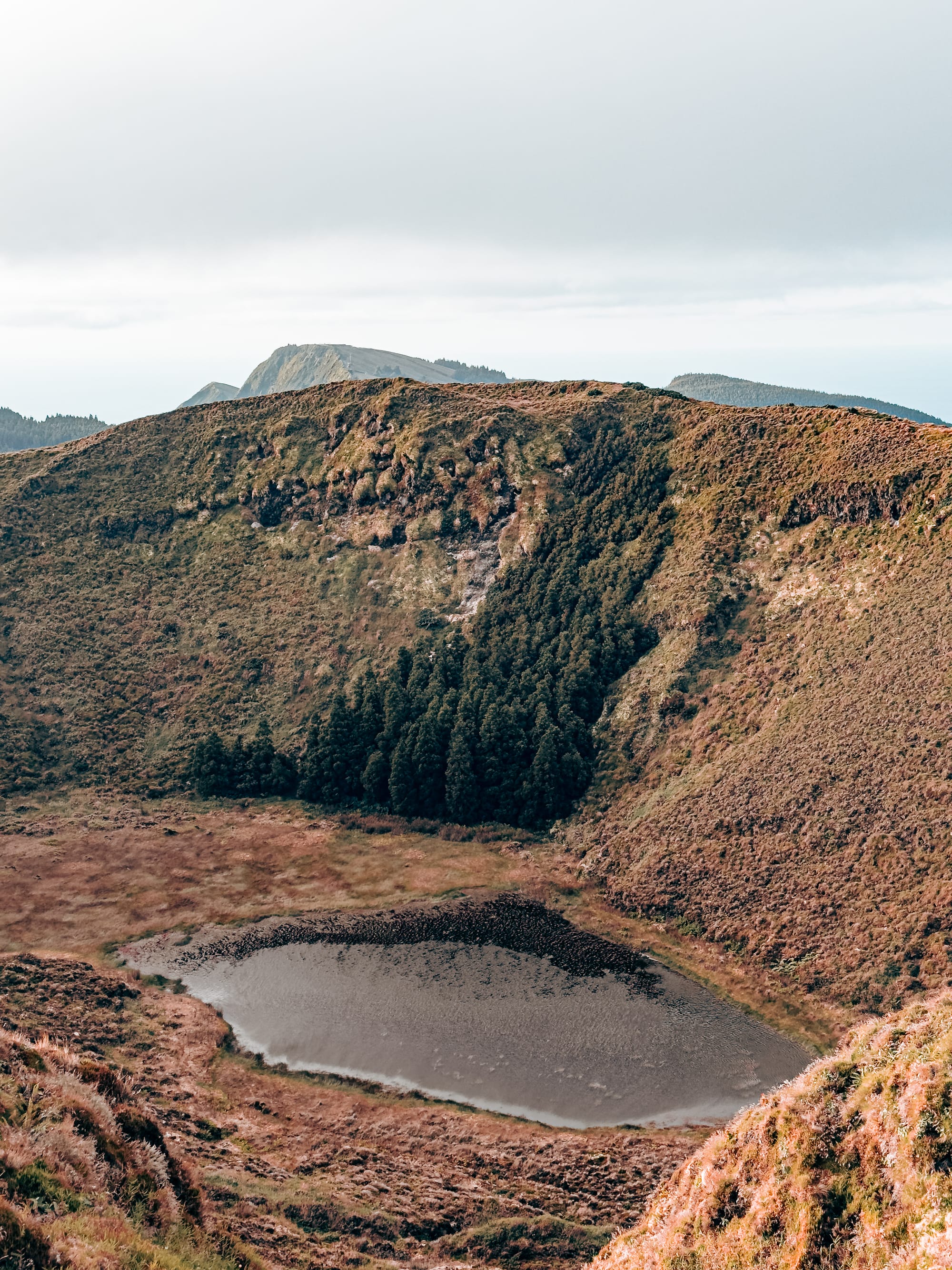
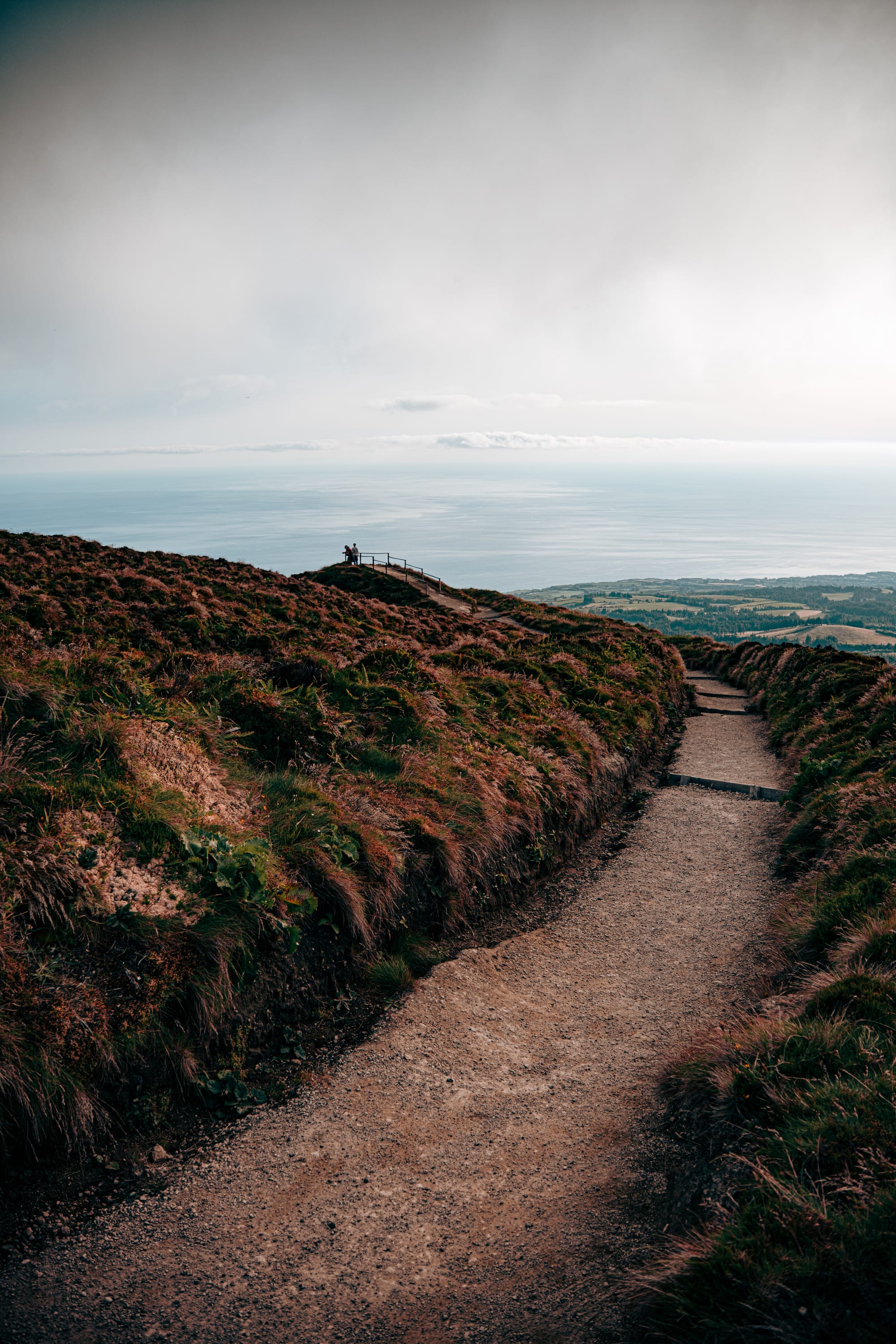
A shallow crater lake bordered by forest on one side, with the trail rising toward an ocean-facing viewpoint
From the ridgeline, the trail cuts across open earth—red, gold, brown, and rust—and it feels like you’re walking across a painting. In places the trail narrows, in others it opens wide. Everything is shaped by the wind.
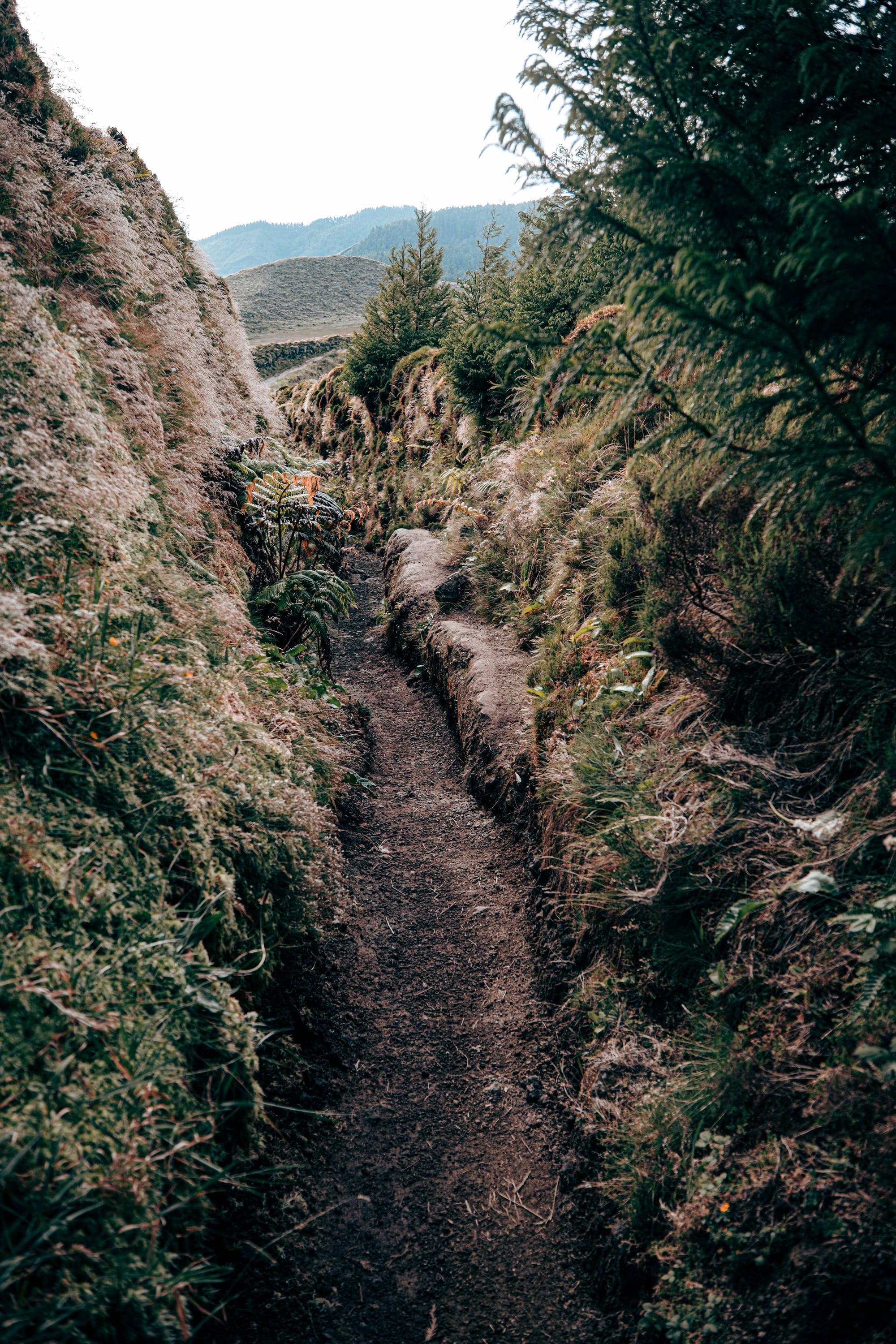
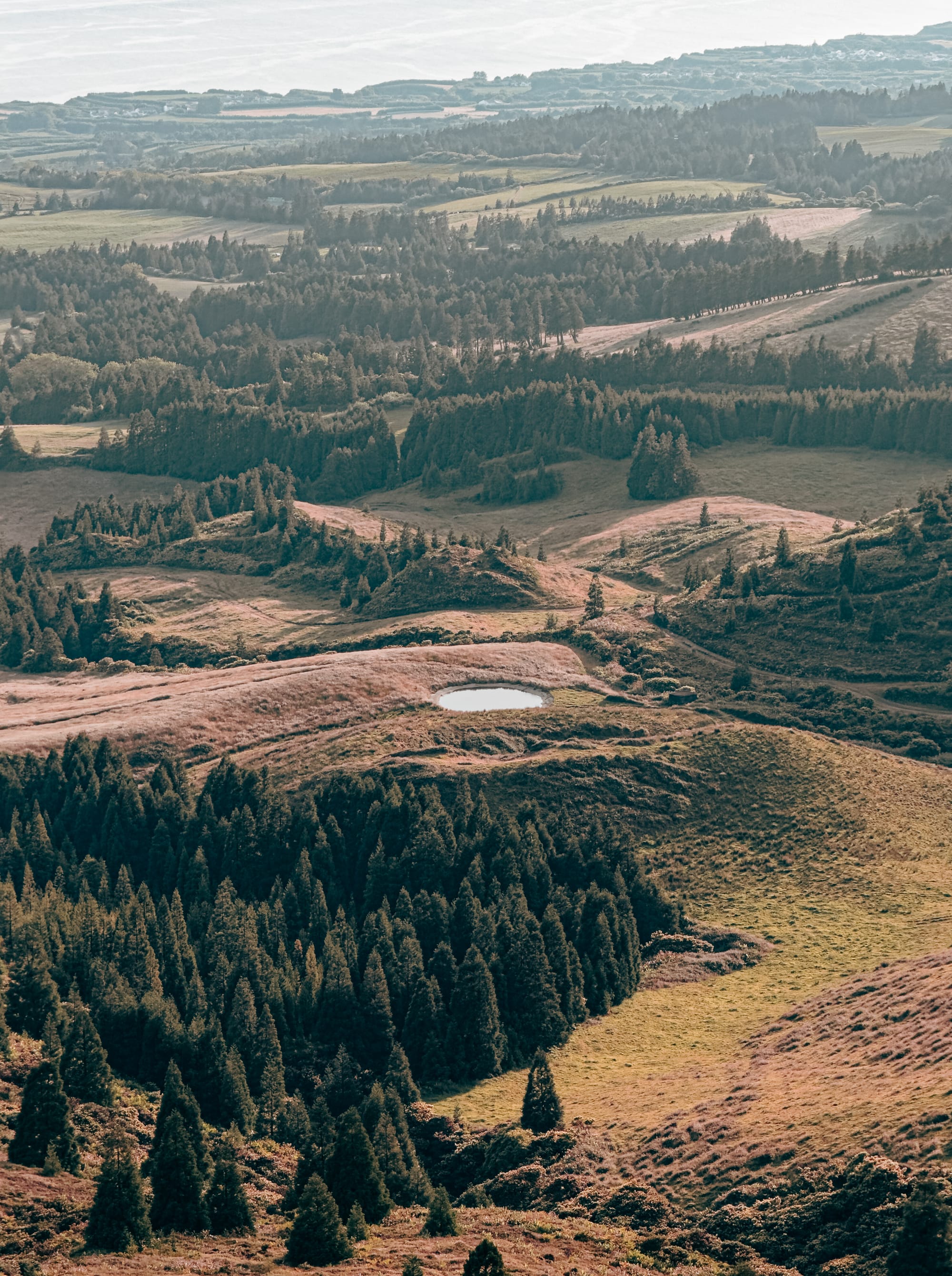
A carved path winding through mossy hills meets a panoramic view of crater lakes
You can see the ocean in the distance, and in some sections, the trail itself seems to pour toward it. From above, it looks like a thread of path woven between crater walls and sky.
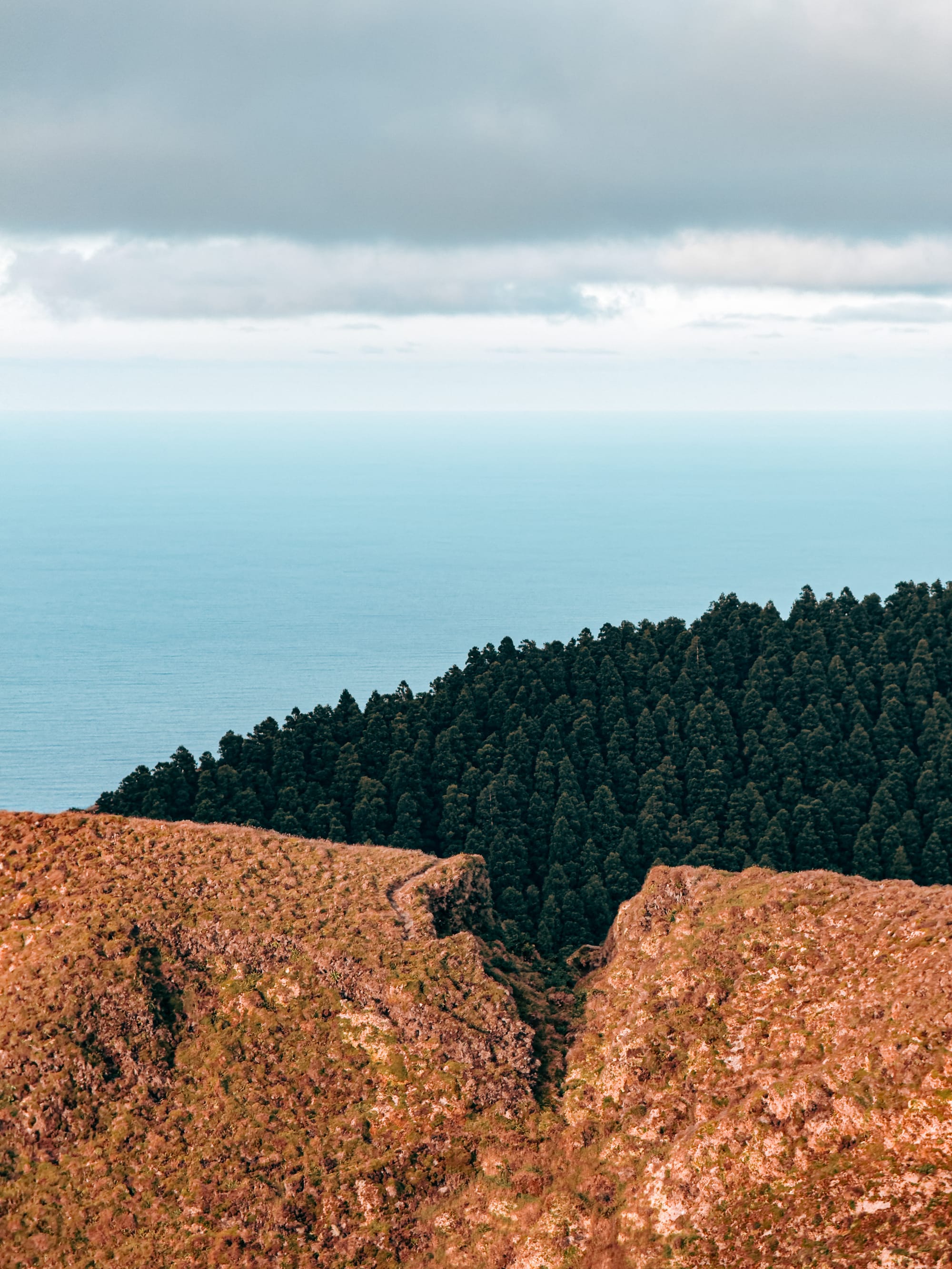
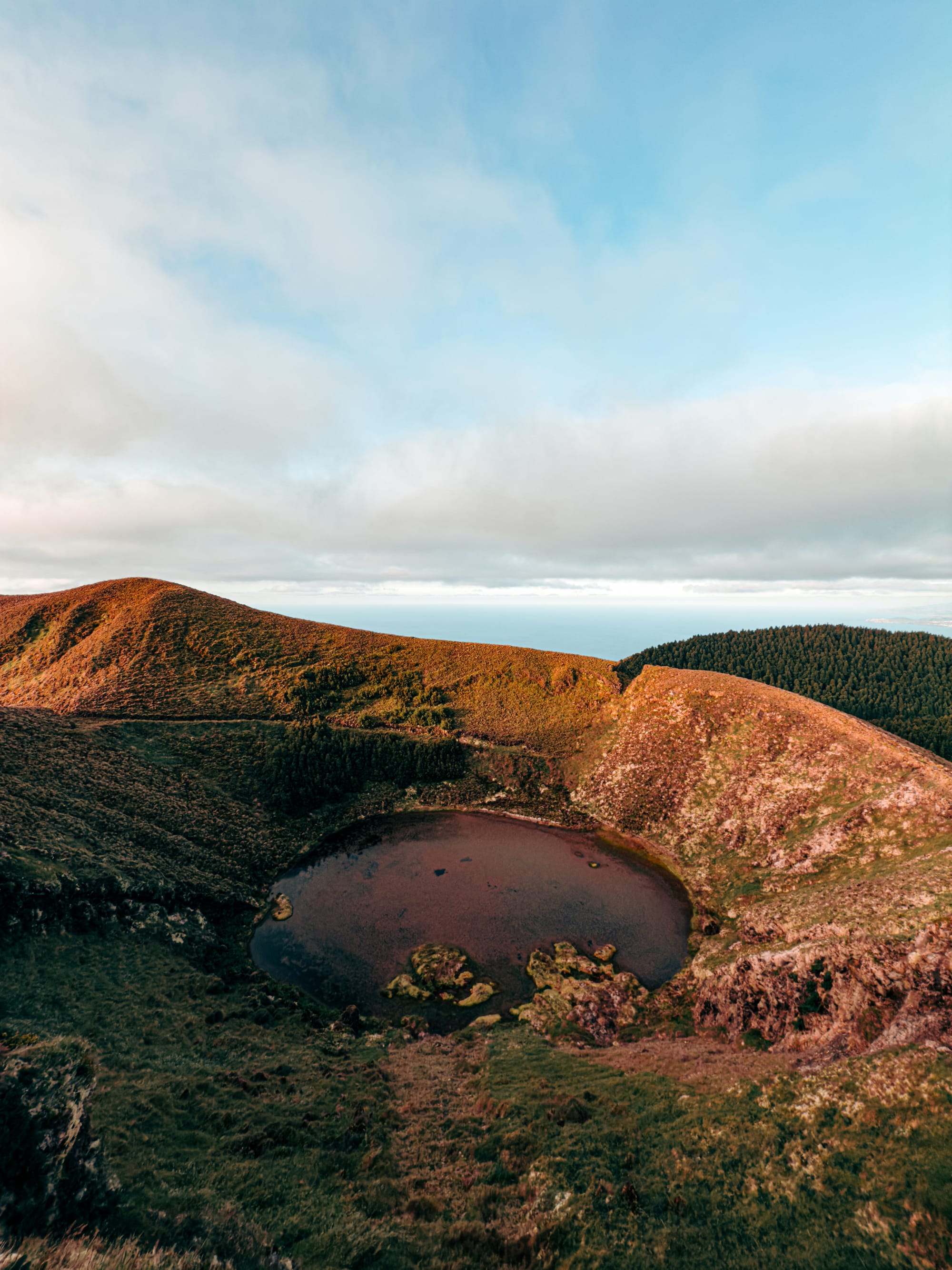
A narrow trench-like trail weaves through dense, moss-covered hills before opening to a wide landscape
Along the way, you’ll pass through sections that feel suspended between sea and sky. The trail threads along slender curves of volcanic ridgeline, where the terrain drops steeply on either side. In one unforgettable section, the path tilts toward a panoramic view of the Atlantic, giving the sensation that you’re walking straight toward the horizon.
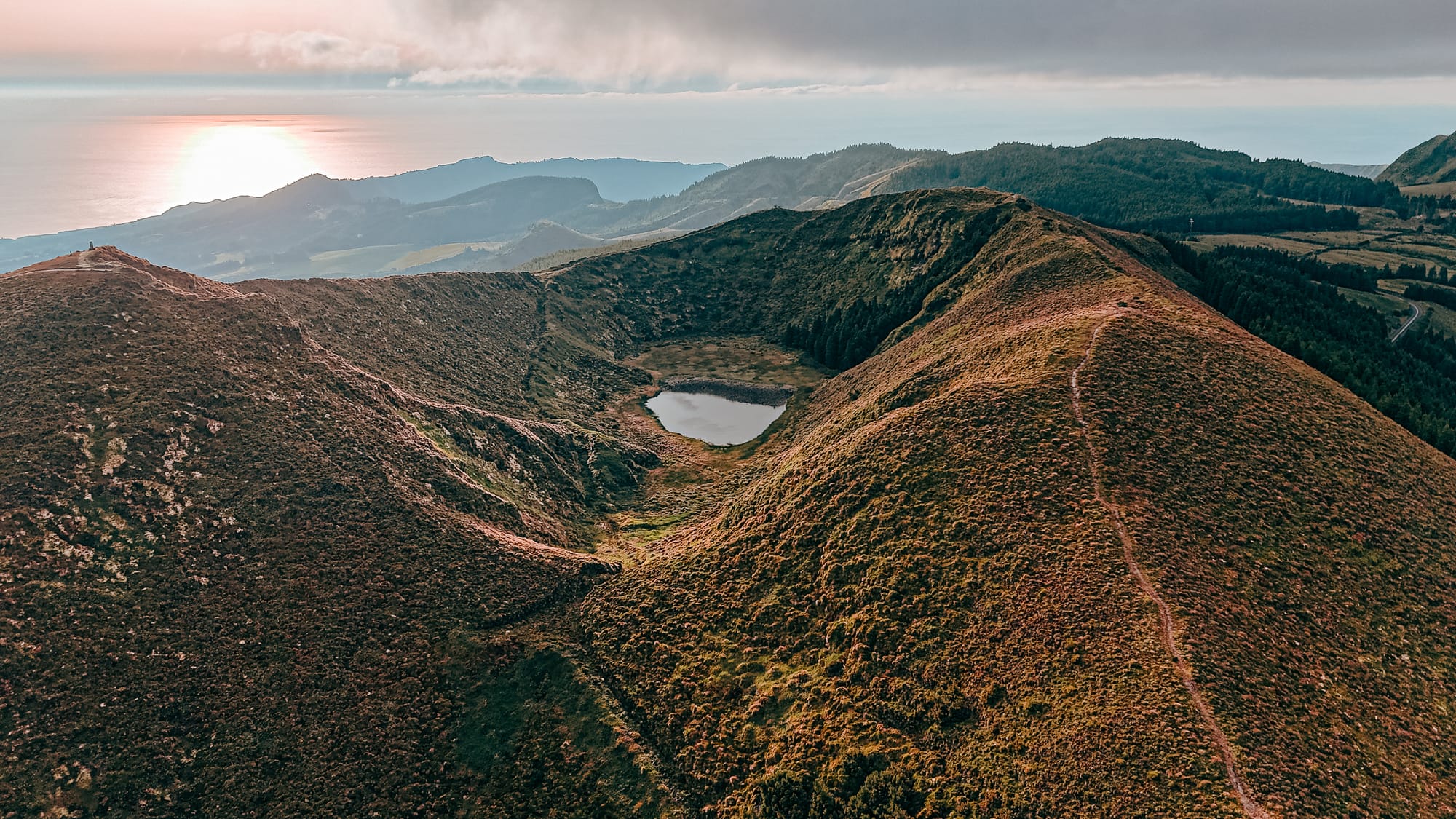
These elevated segments are punctuated by moments of close-up detail: sun-dried grasses brushing your knees, soft crunches underfoot, and the occasional rise of wind curling through the crater bowls. In clear weather, the path ahead glows in late light, drawing a line between one lake and the next.
Multiple lagoas, each with its own mood
There are several crater lakes along the way, each with its own hue and atmosphere. Some are full, calm, and reflective. Others are shallow or nearly dry, their basins covered in coppery grasses and ochre-colored soil.
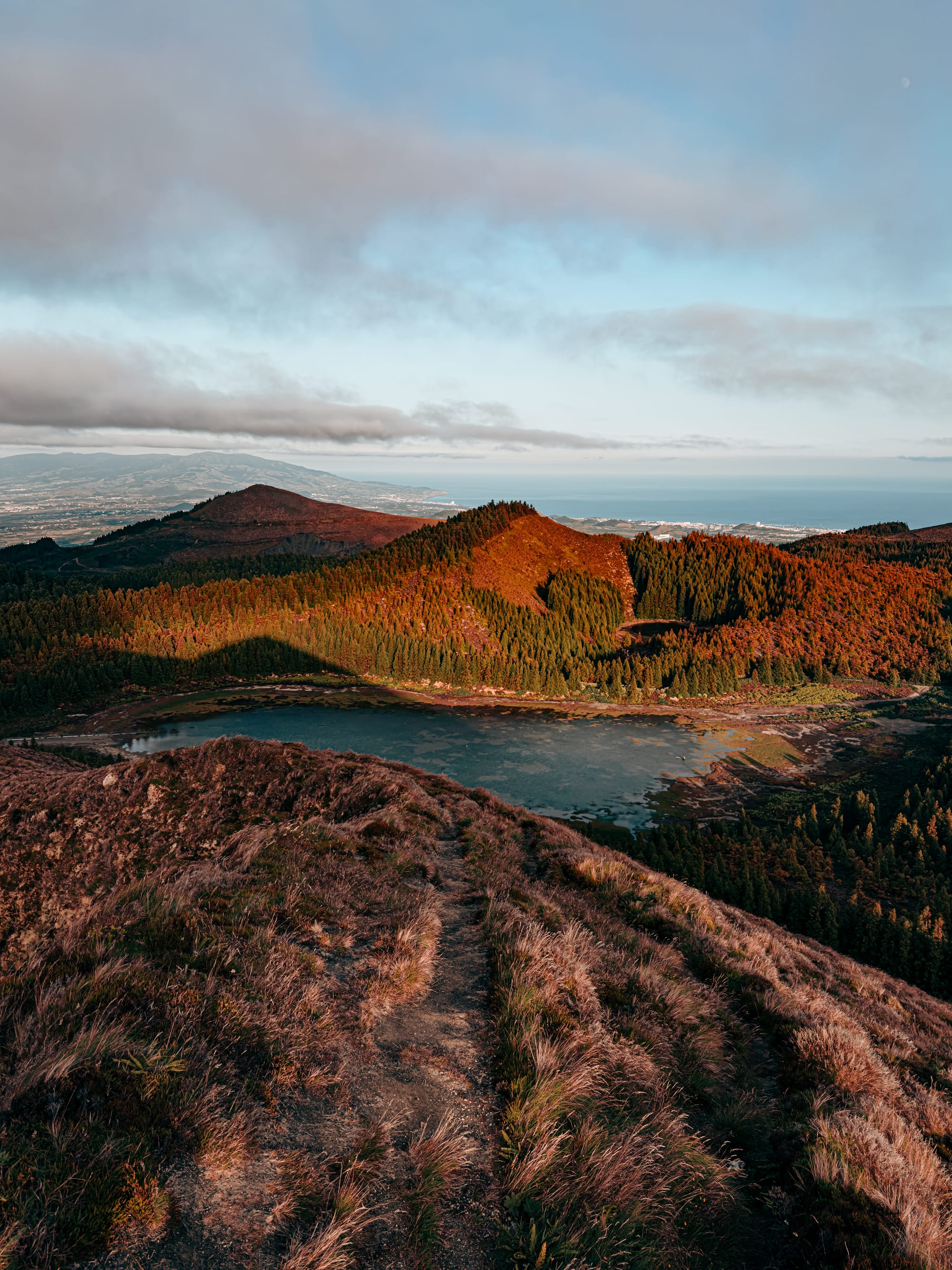
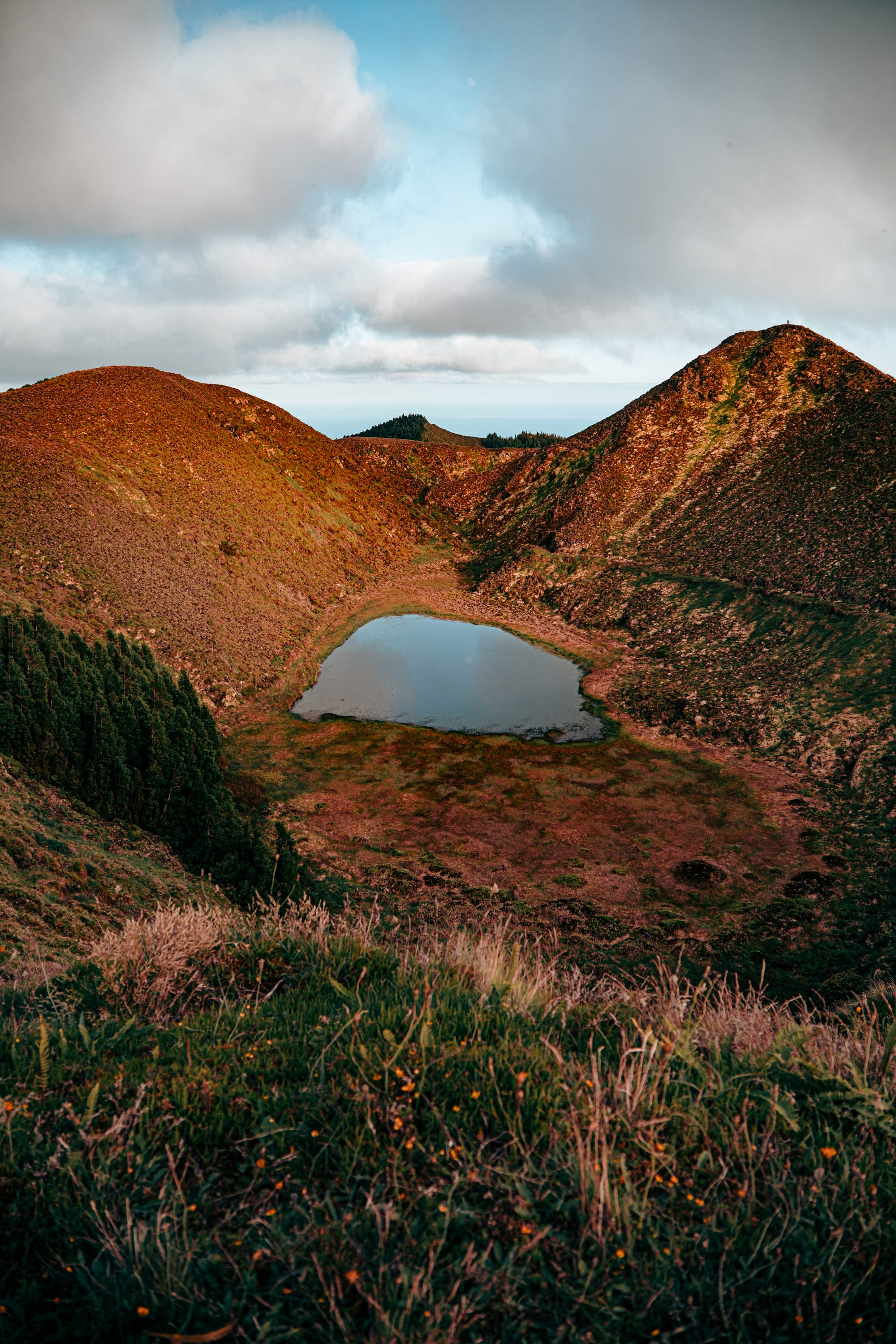
Two crater lakes in golden hour light—one bordered by dense forest, the other cupped by steep, rust-colored volcanic walls
In one section, two distinct lagoas appear in the same sweeping view—one ringed by dark forest, the other by bracken and moss. You’ll cross gentle ridges between them, moving from one high bowl to the next.
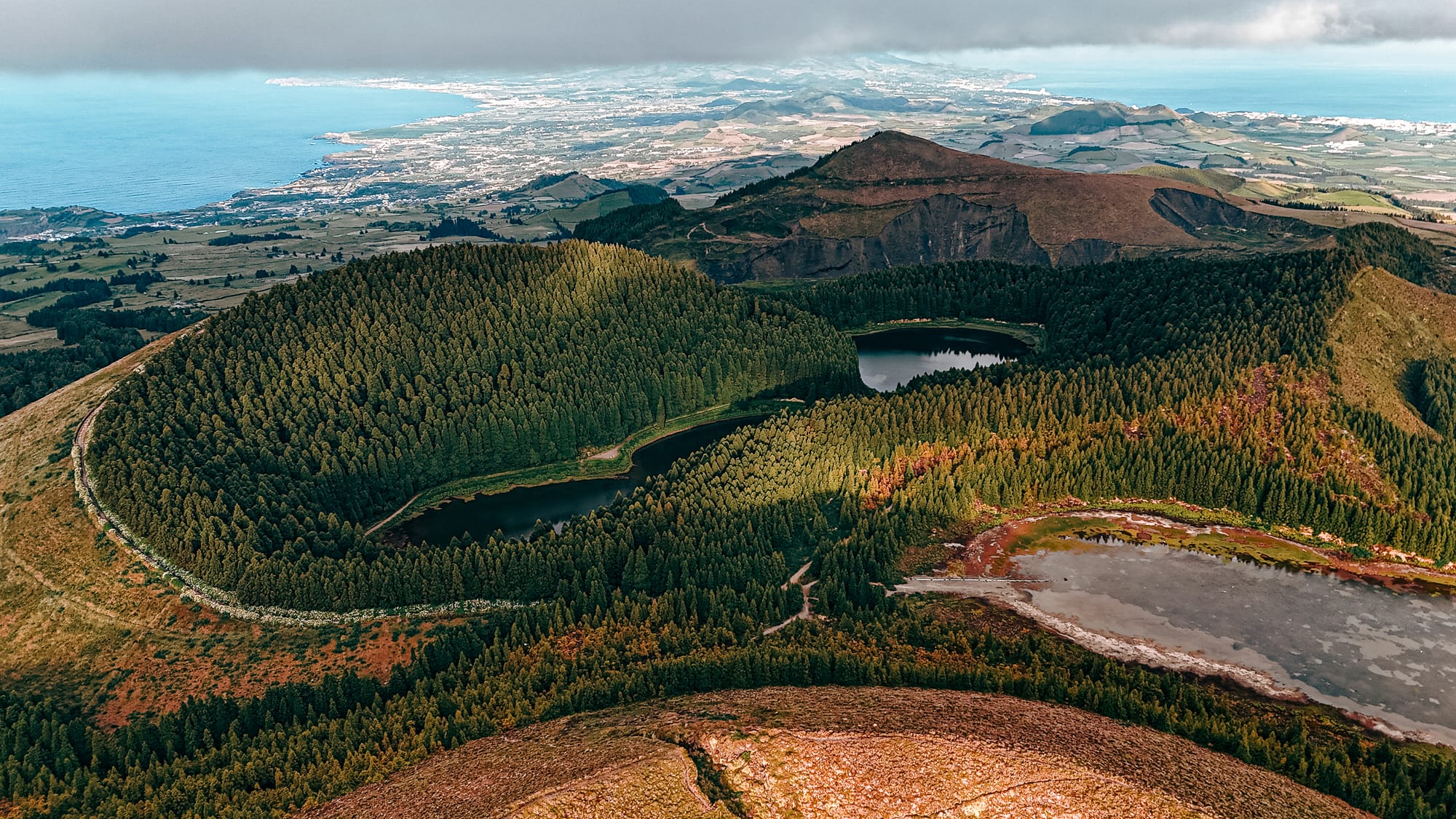
As you continue walking, more crater lakes come into view—some half-hidden behind folds of the land, others wide open beneath the sky.
Each lagoa offers its own moment of pause. Some you encounter from above, as still ovals below. Others invite you close, the path dipping briefly toward their edges before leading back upward again. No two feel the same, and that variation becomes a rhythm, a visual counterpoint to the steady forward motion of the trail.
The mosses: red, gold, green, and rust
One of the most remarkable aspects of this hike is the color of the ground itself. Rich patches of moss grow in thick carpets along the slopes and crater floors, ranging from saffron yellow to deep crimson. Some cling to the rocks in shaggy clusters; others spread across the soil in spongy mats.
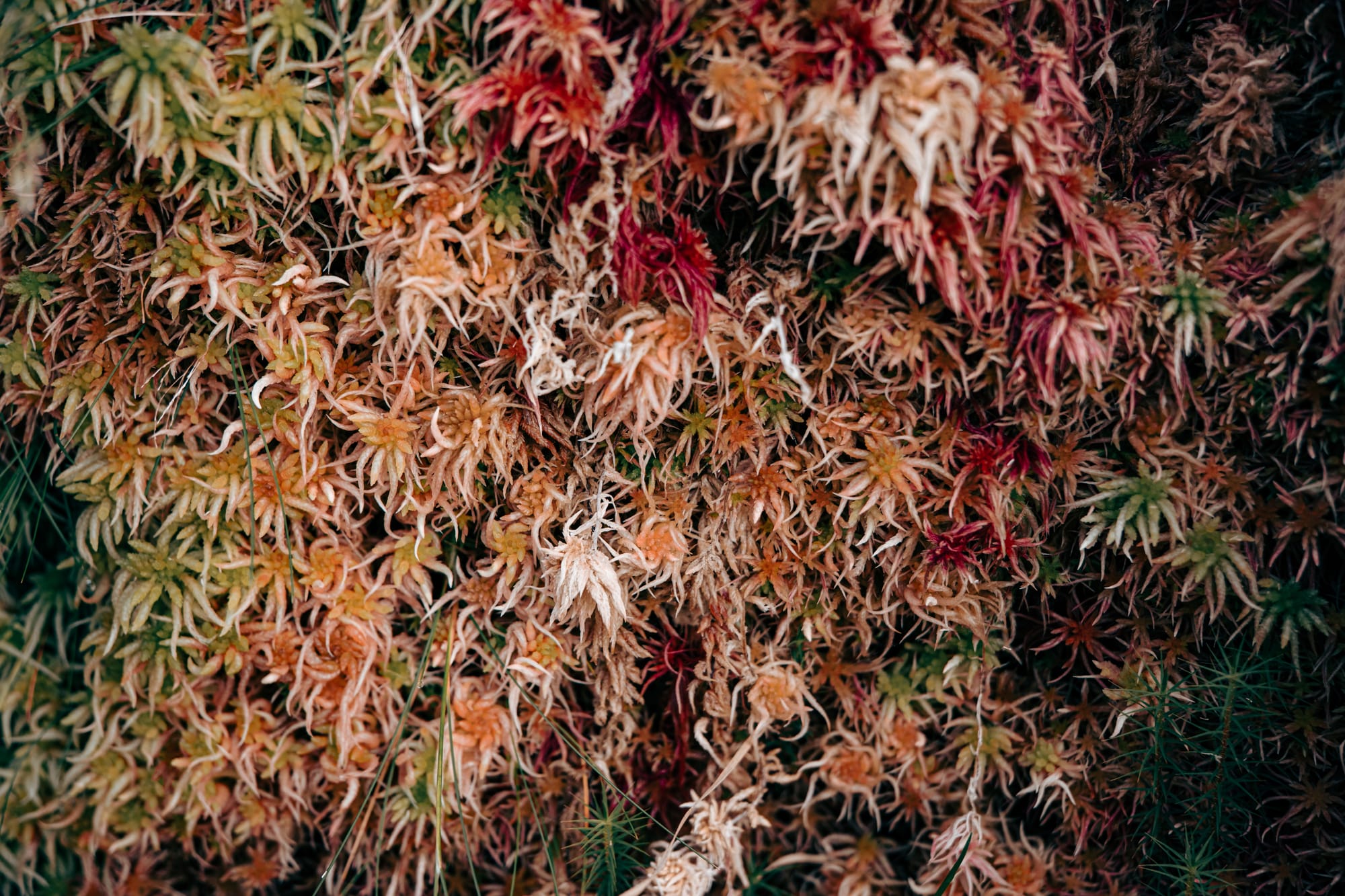
The red moss in particular glows against the volcanic earth. It creeps up boulders and spills over ledges, adding an electric contrast to the rust-colored slopes.
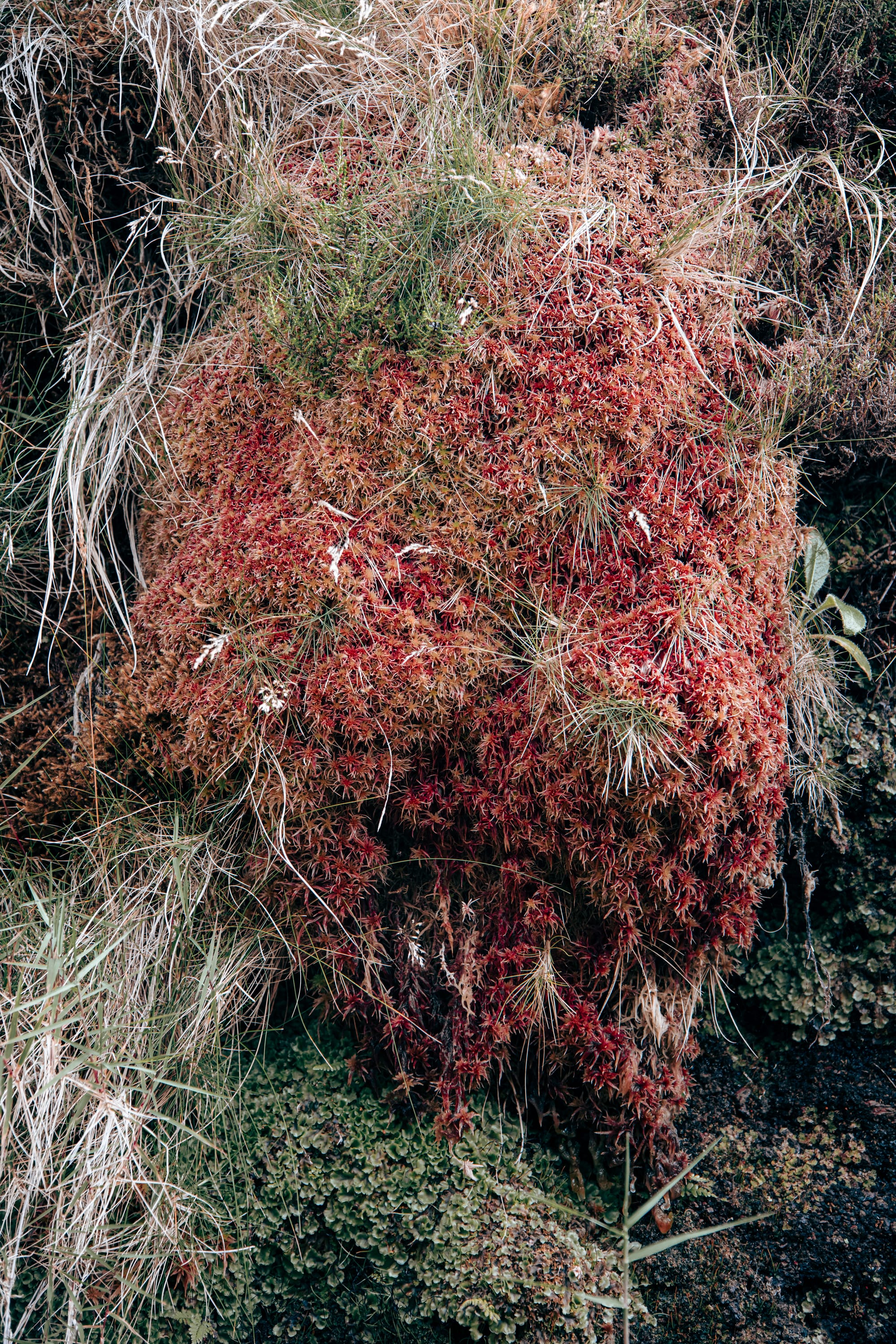
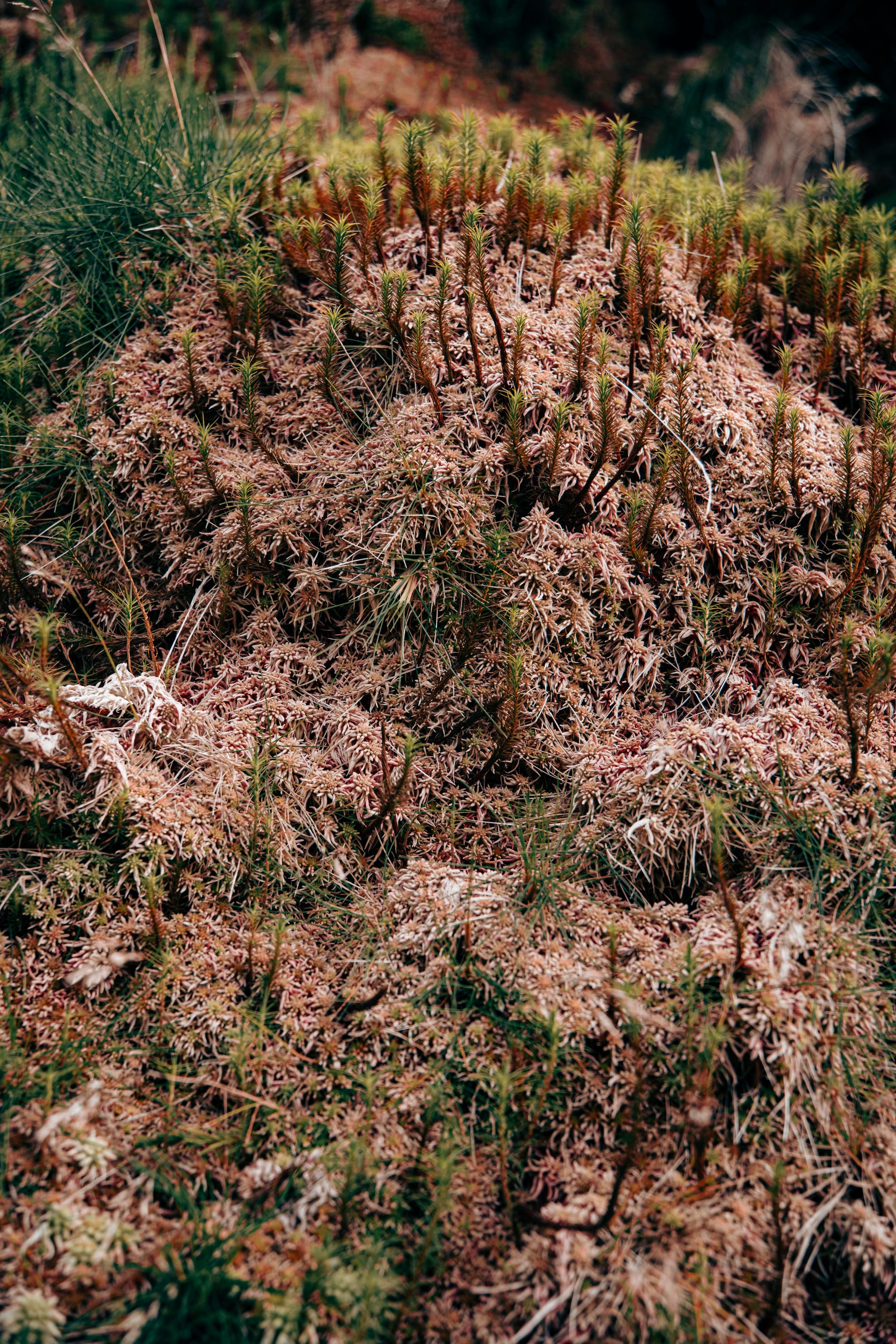
Crimson-tinted moss spilling over rock ledges and dense pale green and copper patches carpeting the volcanic trail
You’ll pass entire sections of trail flanked by these moss fields, their textures changing with the light and wind. In the late afternoon, the low sun brings out their full palette, giving the ground an almost surreal, painterly quality.
Textures and terrain
The trail itself varies. Some sections are smooth, sandy, and wide; others narrow into winding tracks that follow the edge of the caldeiras. In some areas, simple wooden planks help step over soft terrain or drainage paths. Elsewhere, the trail is carved directly into the hillside, edged with grasses and volcanic debris.
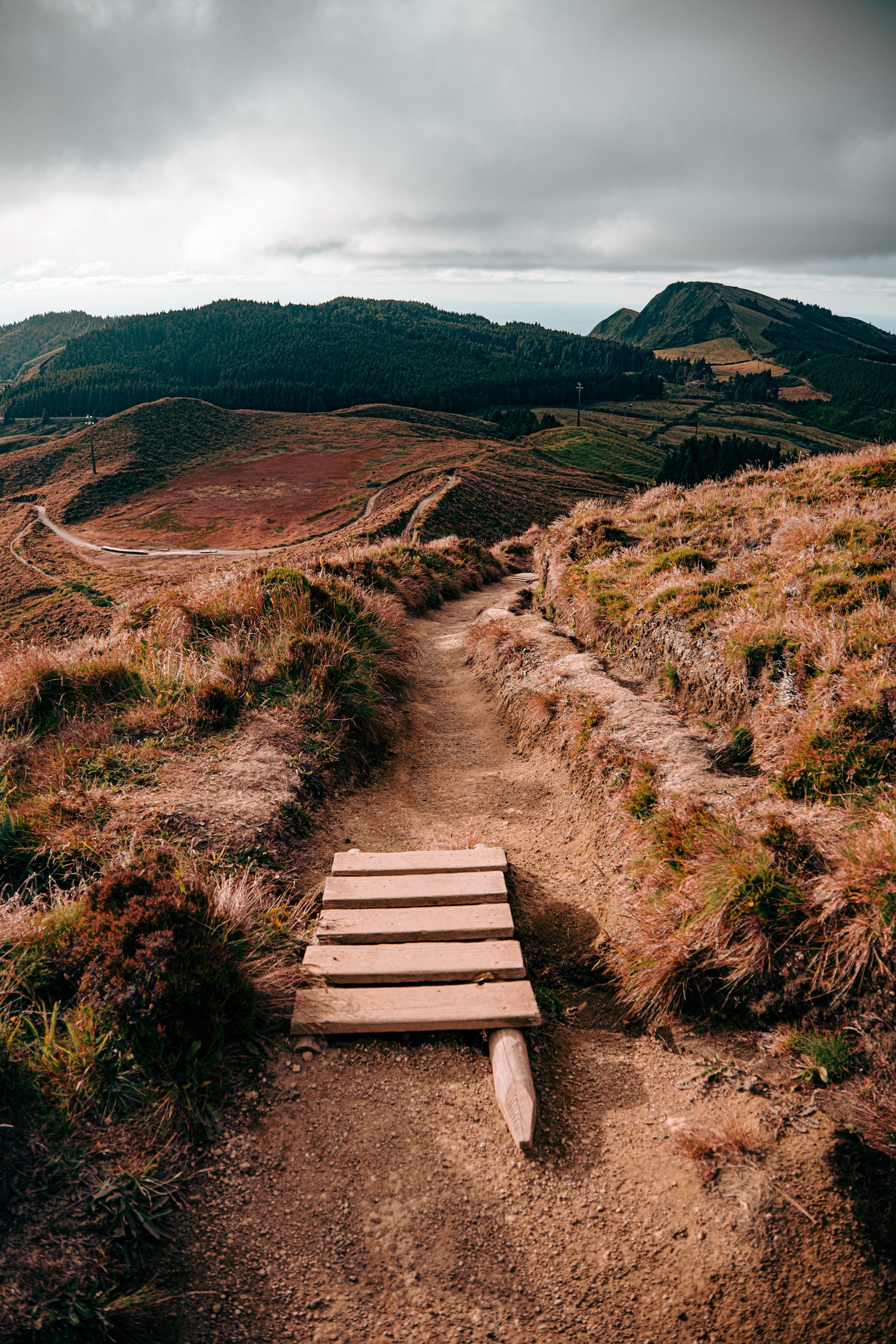
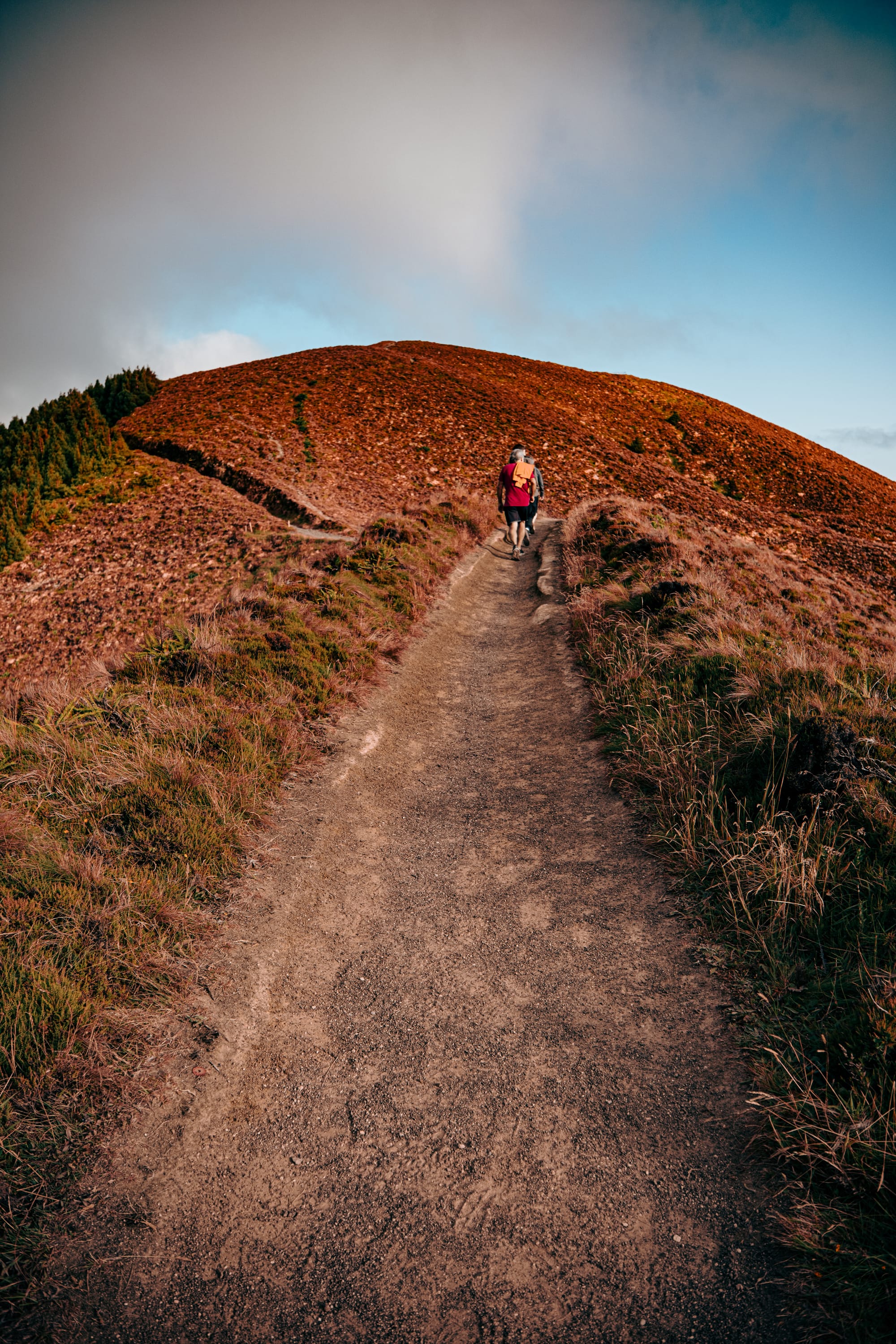
Winding ridgeline trail with volcanic soil underfoot and a wooden plank crossing soft ground, surrounded by red-gold hills
Despite the openness, the elevation changes are gradual and walkable. There are no major scrambles or steep inclines, just long undulating curves that match the land’s natural folds.
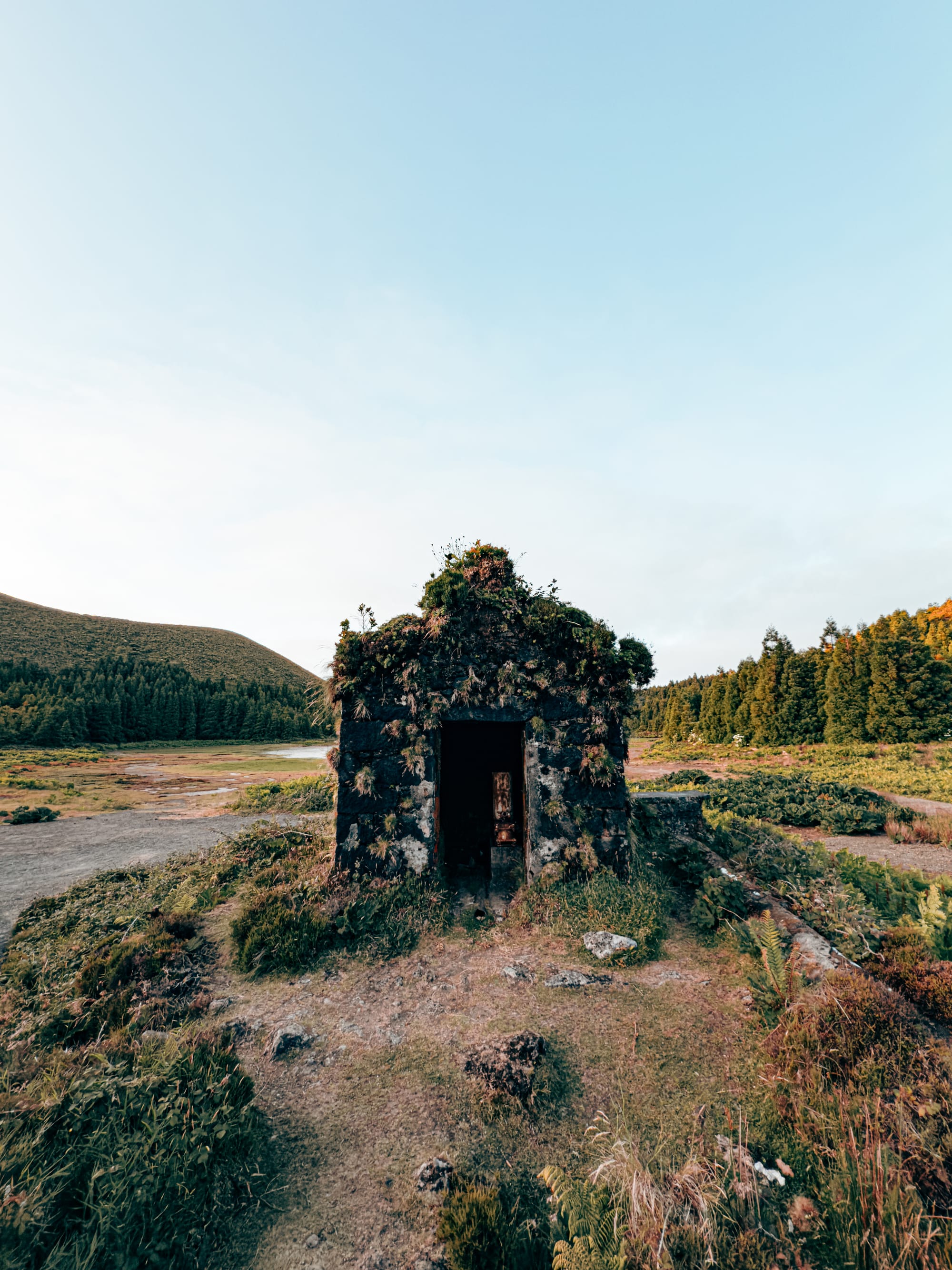
It’s a route best walked slowly—to take in the shifts in texture, color, and vegetation. To let your pace sync with the quiet of the lakes and the movement of clouds overhead.
Flora and unexpected life
Though the landscape feels almost lunar in places, it’s full of life. Bright yellow wildflowers cluster along the trail’s edge. Hardy fern varieties unfold their spiraled leaves beside pools. In more protected pockets, you’ll find deep green foliage climbing the crater walls, and occasionally, the gnarled silhouette of a lone tree.
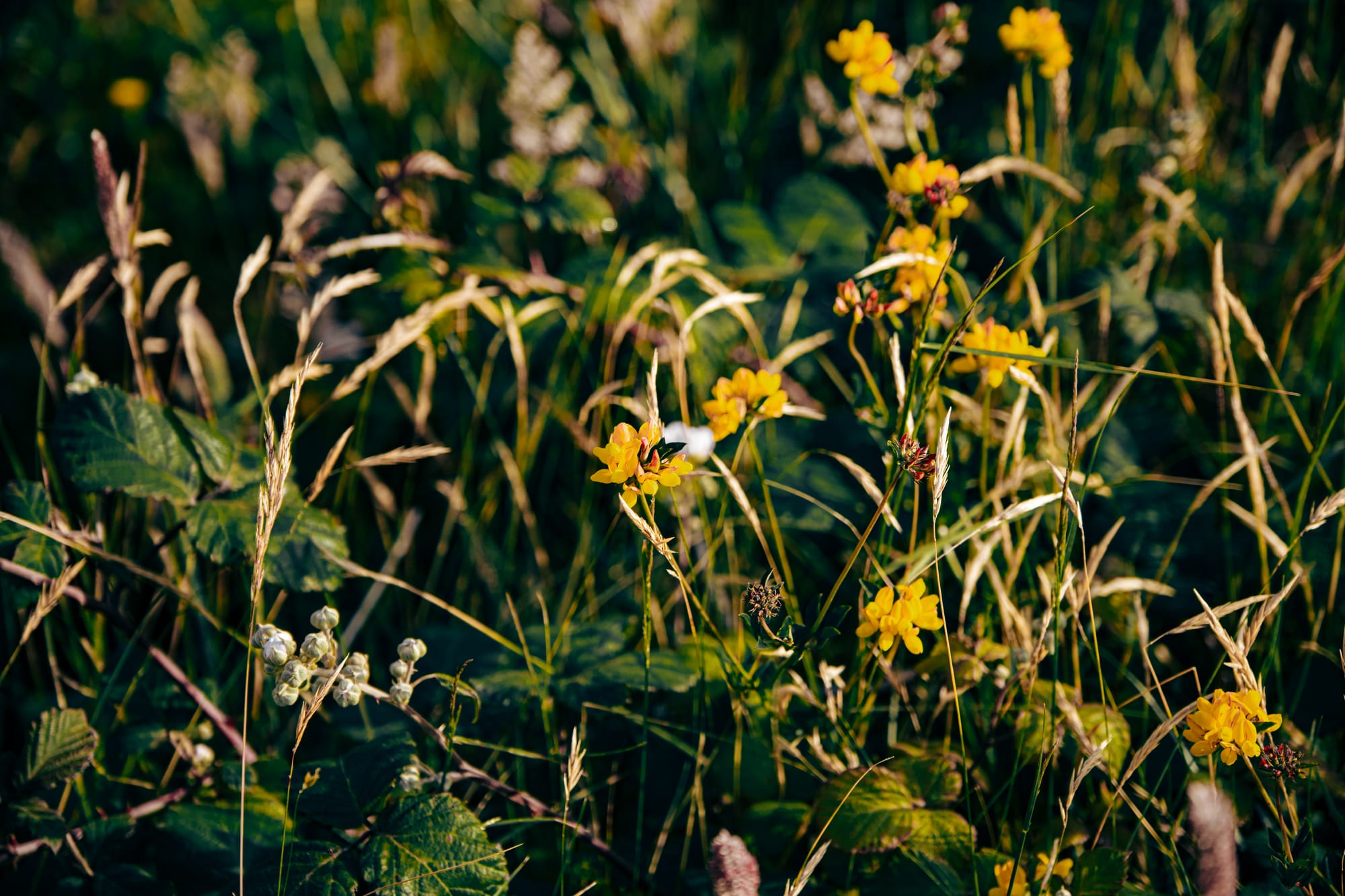
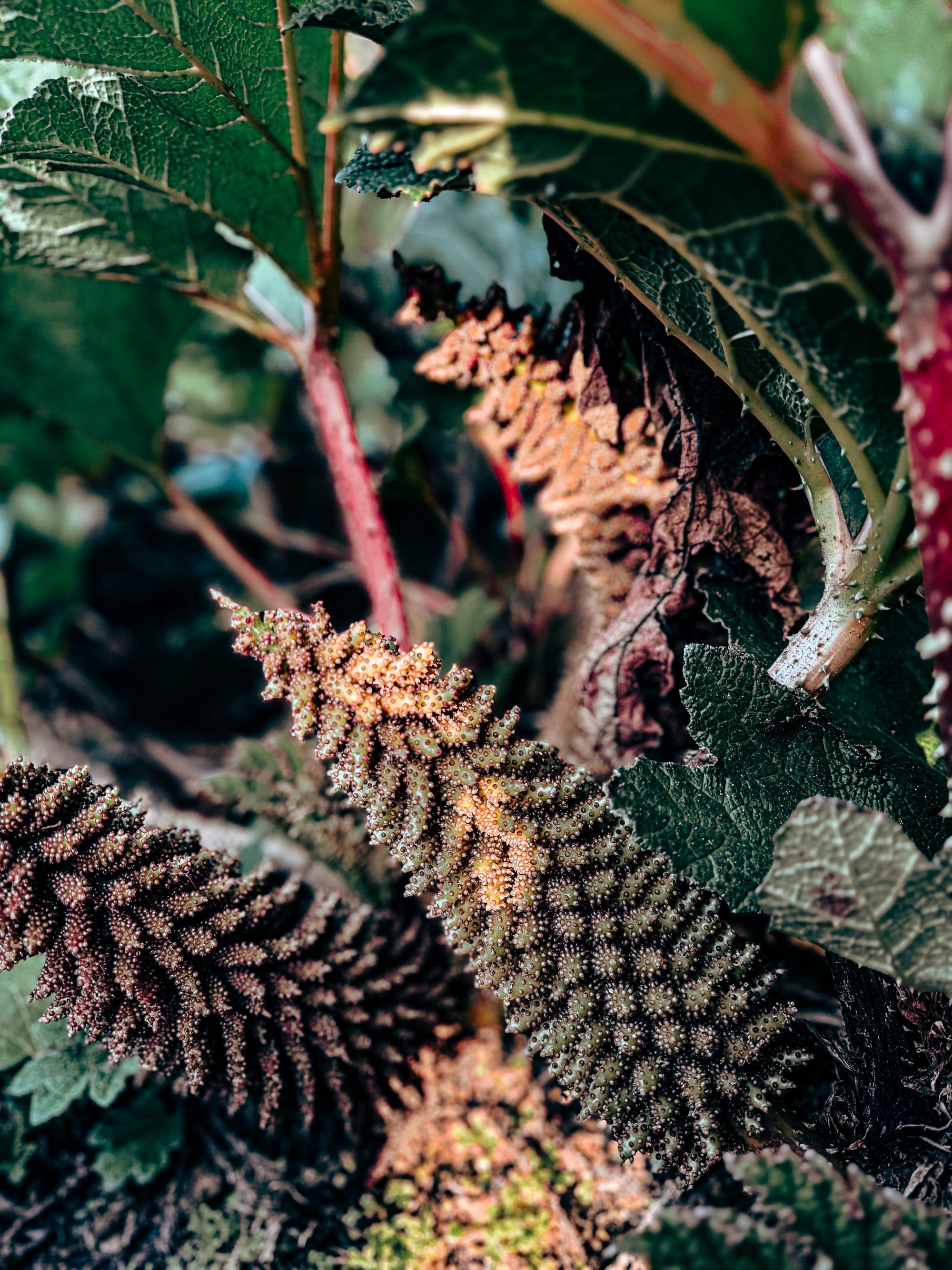
Details from the trail’s edge: yellow wildflowers in the wind and spiked seed heads curled beneath large volcanic leaves
One section of the trail cuts through a grove of densely packed, wind-shaped trees, their trunks twisted and low. The trail narrows here, feeling almost like a secret path between biomes, before opening again into wide air.
Viewpoints and open sky
What sets this trail apart is the access it gives you to multiple layered viewpoints. In one glance, you might see two crater lakes, the ocean beyond, and the quilted pattern of far-off farmland. The trail moves you constantly between these layers—close texture, wide view, and back again.
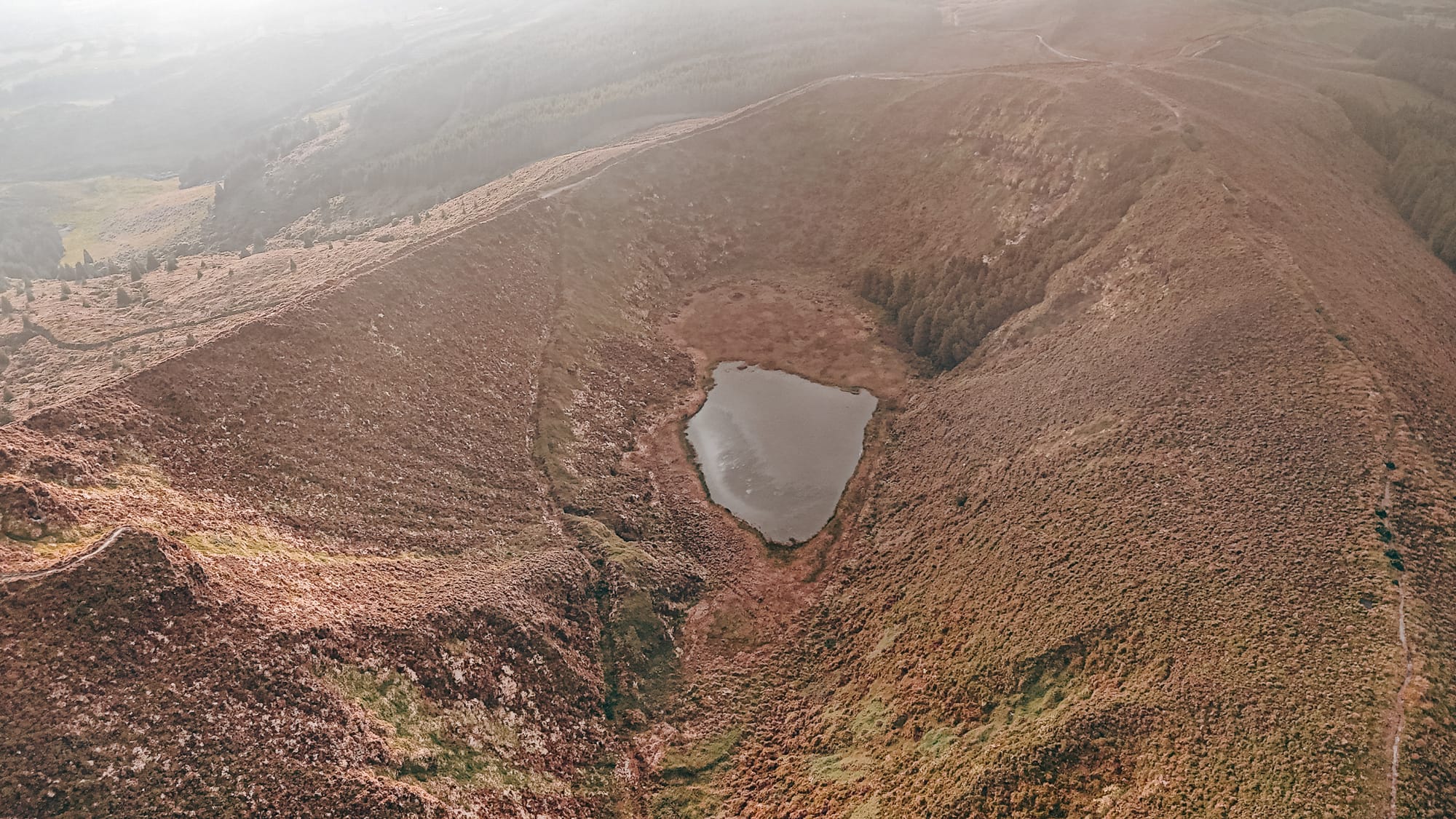
It’s not a crowded trail. Most likely, you’ll have the ridgelines to yourself or share them with just a few other walkers. That solitude, paired with the open horizon and rich ground, makes this a rare kind of hike.
If you're in the area
This is an ideal follow-up or pairing hike to the PR3-SMI trail to Sete Cidades town or to the northeastern coastal trails. It offers a different perspective—not better or worse, just wider, barer, more elemental.
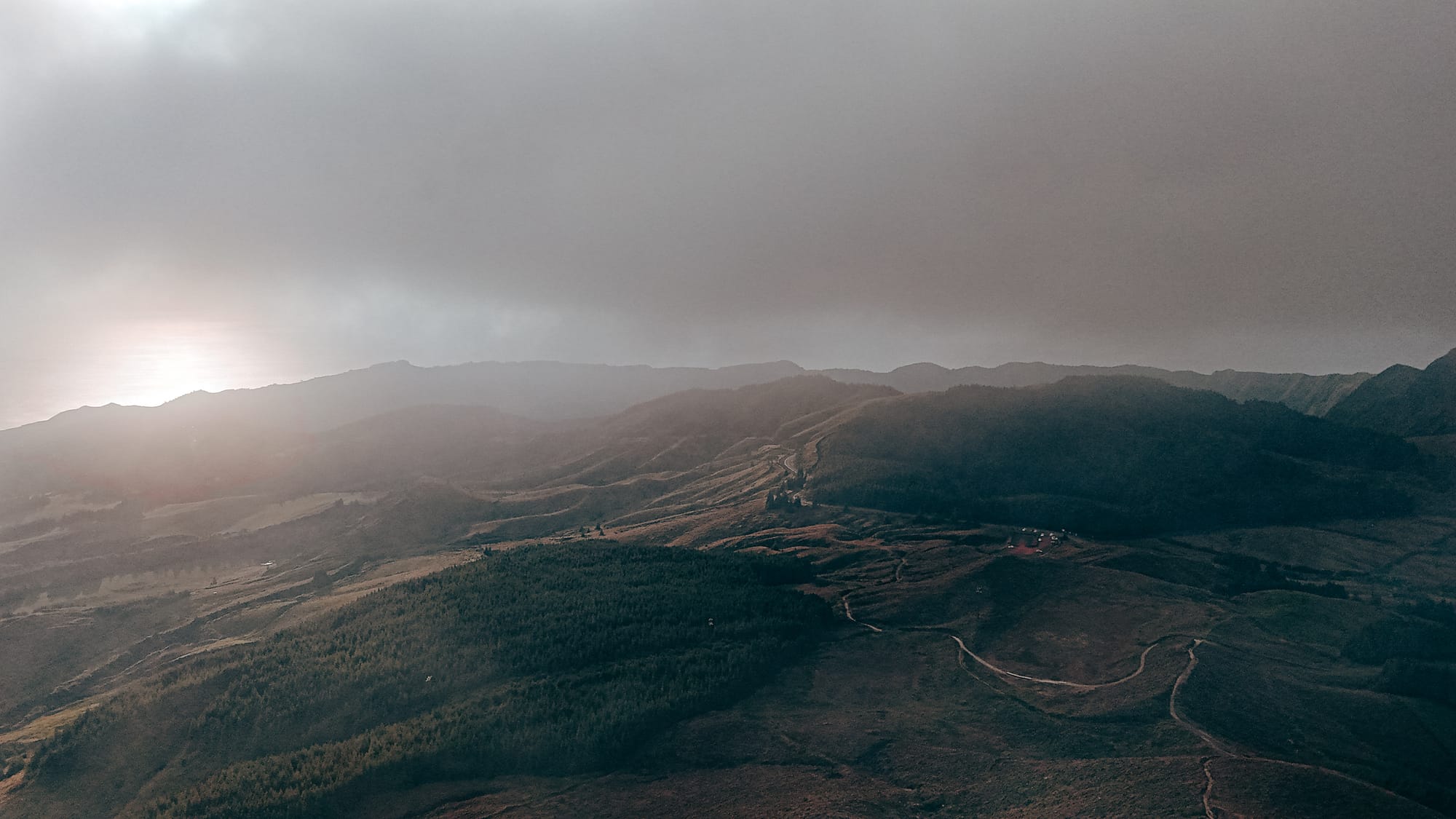
If you have the time, we definitely recommend this one.






